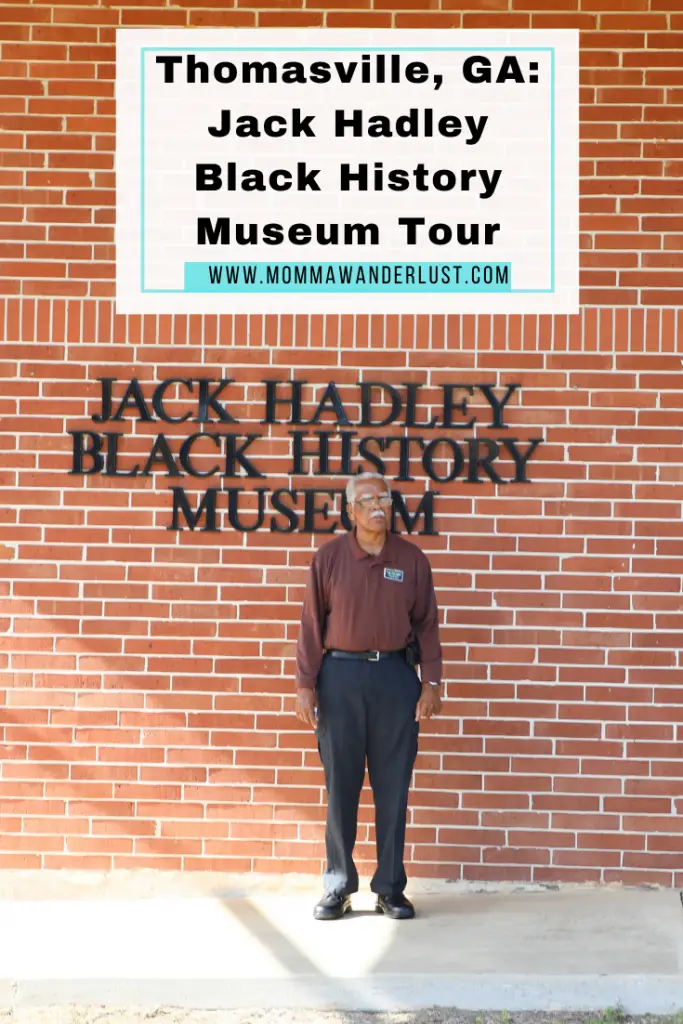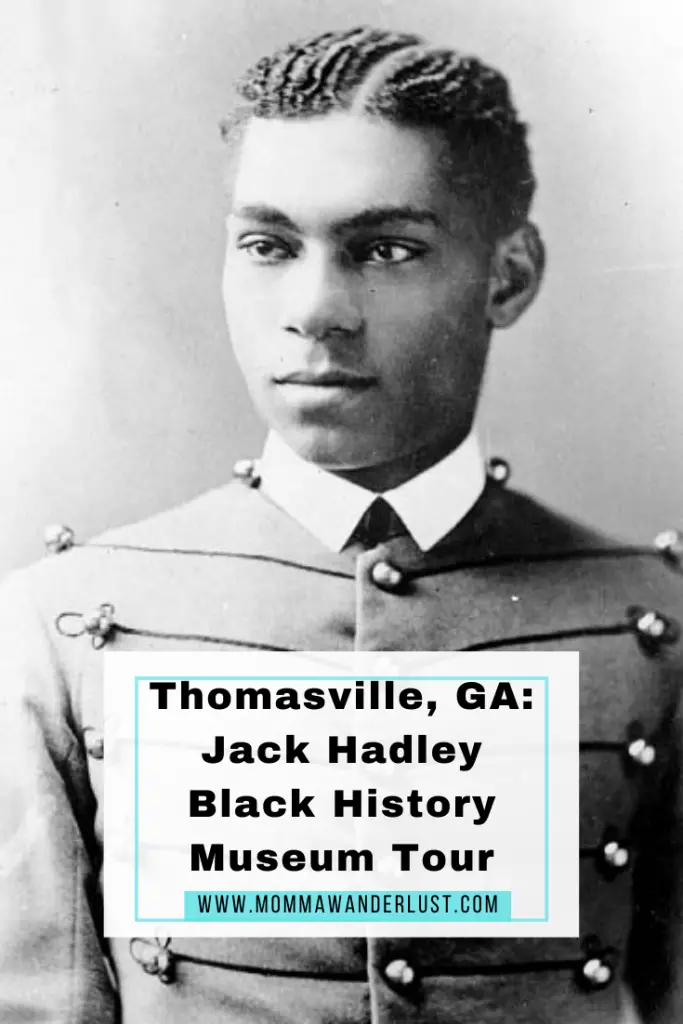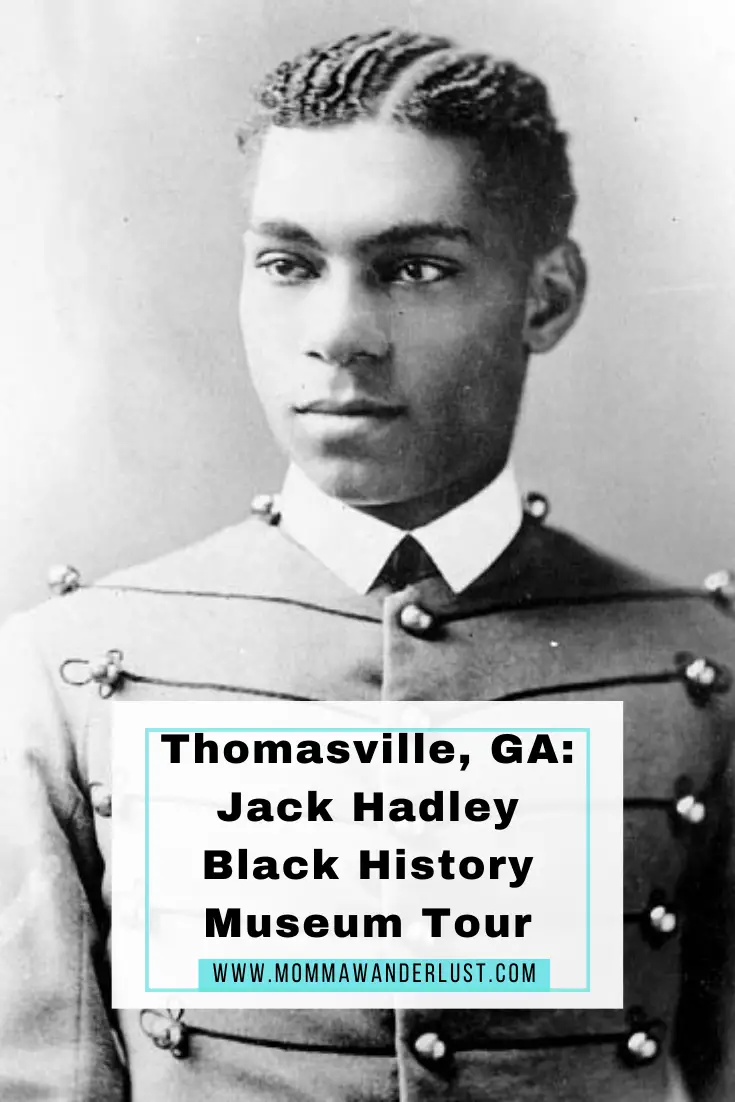Last Updated on January 20, 2024
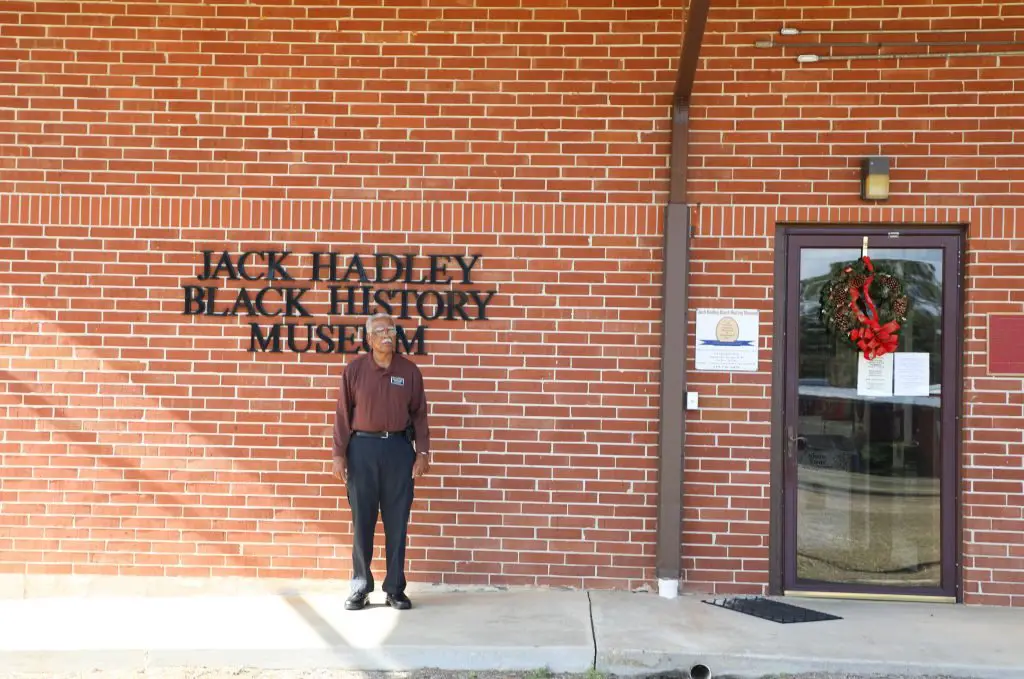
Jack Hadley Black History Museum in Thomasville
I travel to Thomasville, Georgia, frequently to visit my dad, who moved to the city a few years ago, after marrying a Thomasville native. In all of my visits, I never took the time to learn and explore the city until recently.
I truly believe that history is the key to unlocking the DNA of a town, city, or region. So, I did a little research to create a list of things to do and quickly discovered, to my delight, that Thomasville has its very own Black History Museum (the Jack Hadley Black History Museum). We decided that the Jack Hadley Black History Museum would be the first place we visit to get a feel for Thomasville, Georgia, and it did not disappoint.
The museum is located on the former campus of Frederick Douglass High School, which was the first public school for African Americans in Thomasville. Douglass was in operation from 1902-1970. Upon entering the museum, we were greeted by Mr. Jack Hadley, the museum’s 83-year-old founder, and curator. After watching a 10-minute video detailing how the museum was founded, and some highlights of the museum being featured in the news, we were set to start our self-guided tour.
The Jack Hadley Black History Museum is organized by subject, so it’s easy to navigate. But since this museum is filled with more than 5,000 artifacts, here’s a list of the exhibits that should not be missed:
[This post on the Jack Hadley Black History Museum Tour was originally published February 2020, and updated February 2022]
Contents
Jack Hadley Black History Museum: Lt. Henry O. Flipper
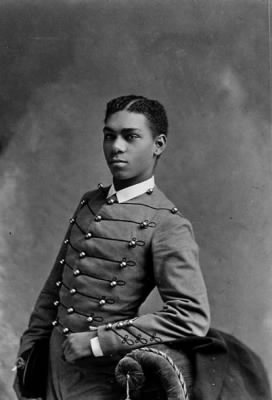
Lt. Henry O. Flipper, Thomasville native and the first African American graduate of West Point
One of the first things we see is an entire section dedicated to one of Thomasville’s own, Lt. Henry O. Flipper. Lt. Flipper was a formerly enslaved man, Buffalo Soldier, and the First African American graduate of the U.S. Military Academy at West Point. Despite his service leading troops, Lt. Flipper was wrongly accused of stealing money, which resulted in him being court-marshaled and dismissed from the U.S. Army. President Bill Clinton posthumously pardoned Lt. Flipper in 1999, 118 years after his conviction.
Jack Hadley Black History Museum: Black Women Who Made a Difference

The Black Women Who Made a Difference Gallery
Next, is the Black Women Who Made a Difference exhibit. This area was broken down into smaller exhibits, one of which was notable women throughout the civil rights movement, another included Black Women’s contribution to the world of cosmetics. There were really cool antique hairdryers and a barber chair in this section.
Jack Hadley Black History Museum: Jim Crow Era in America & Caricatures
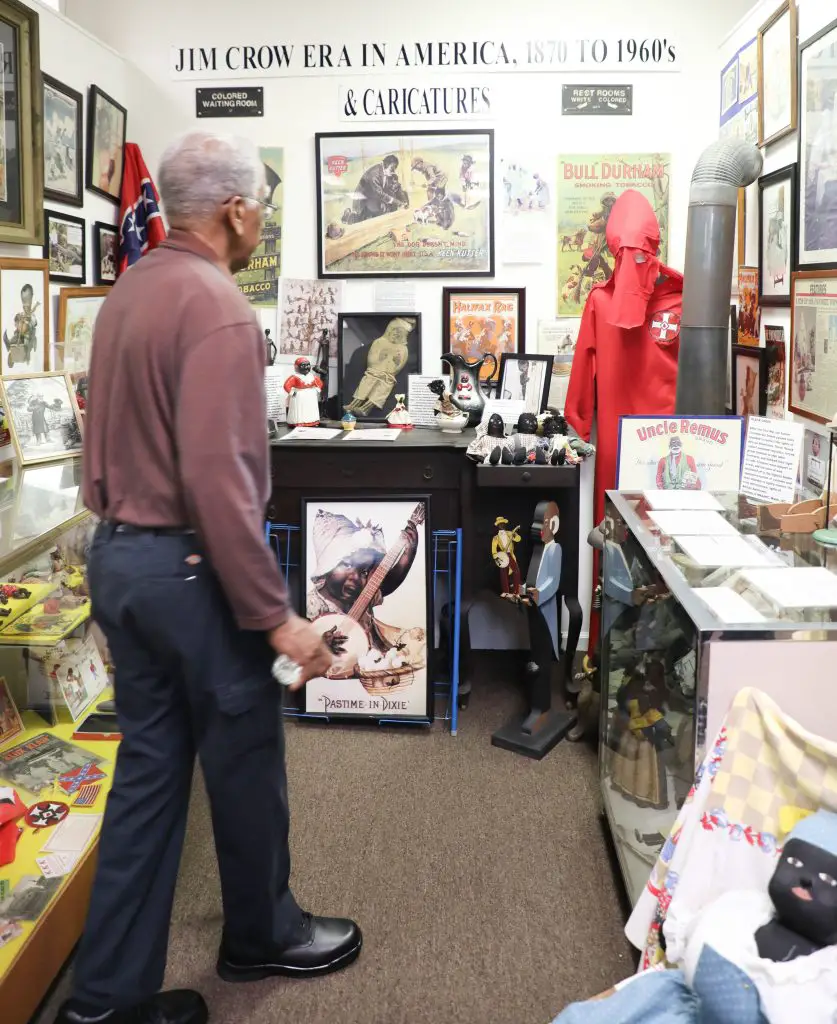
The Jim Crow Era Gallery
Then we headed over to the Jim Crow Era in America gallery which had a lot of interesting artifacts like postcards, dolls, toys, signs, and other symbols of black stereotypes that were commonplace during the Jim Crow era.
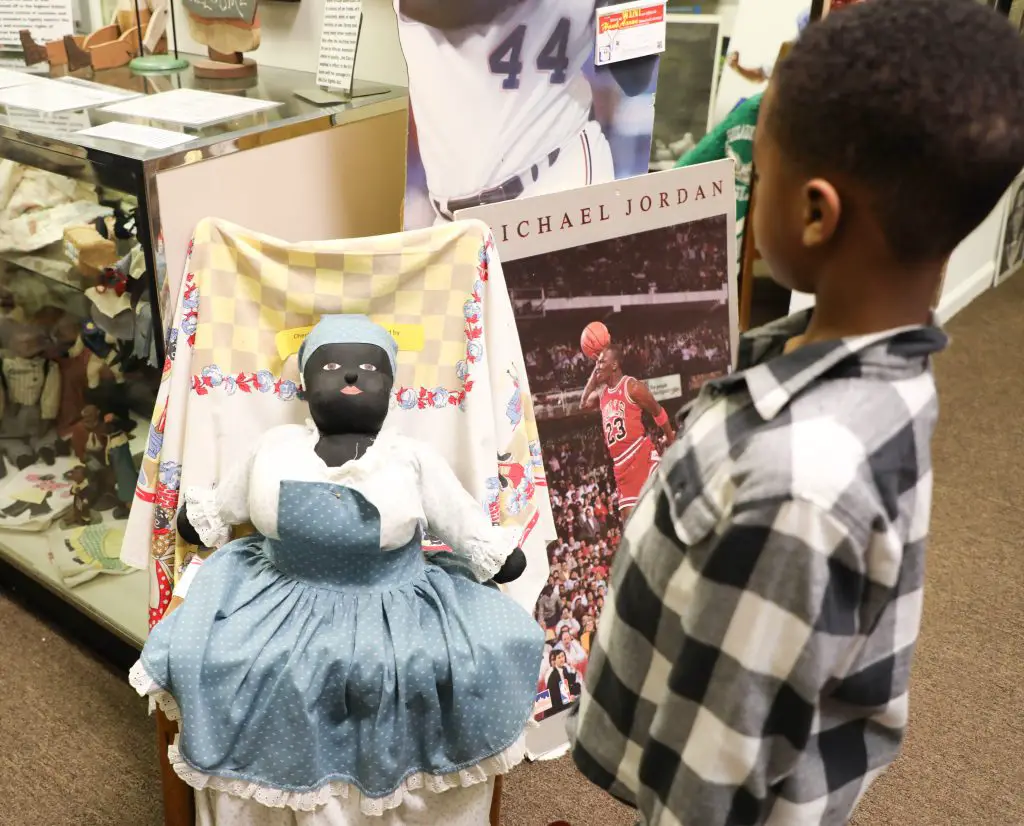
Aubrey learned a lot about the Black Experience
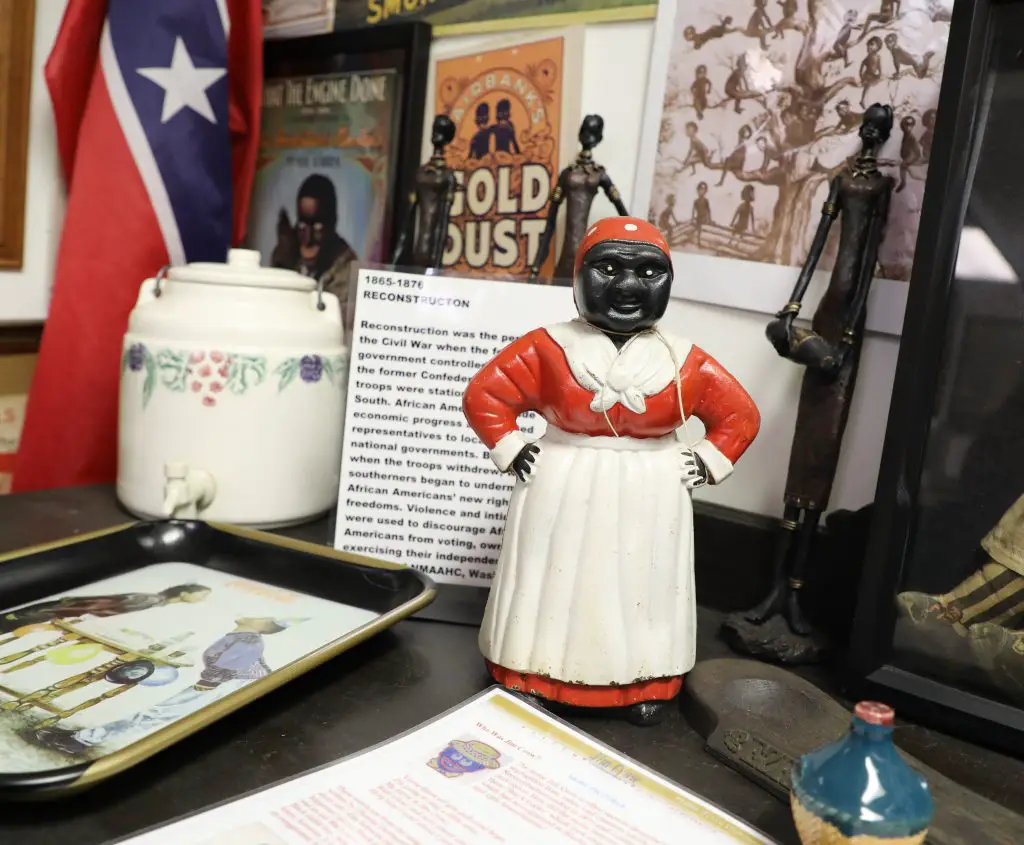
Jim Crow Era Artifacts
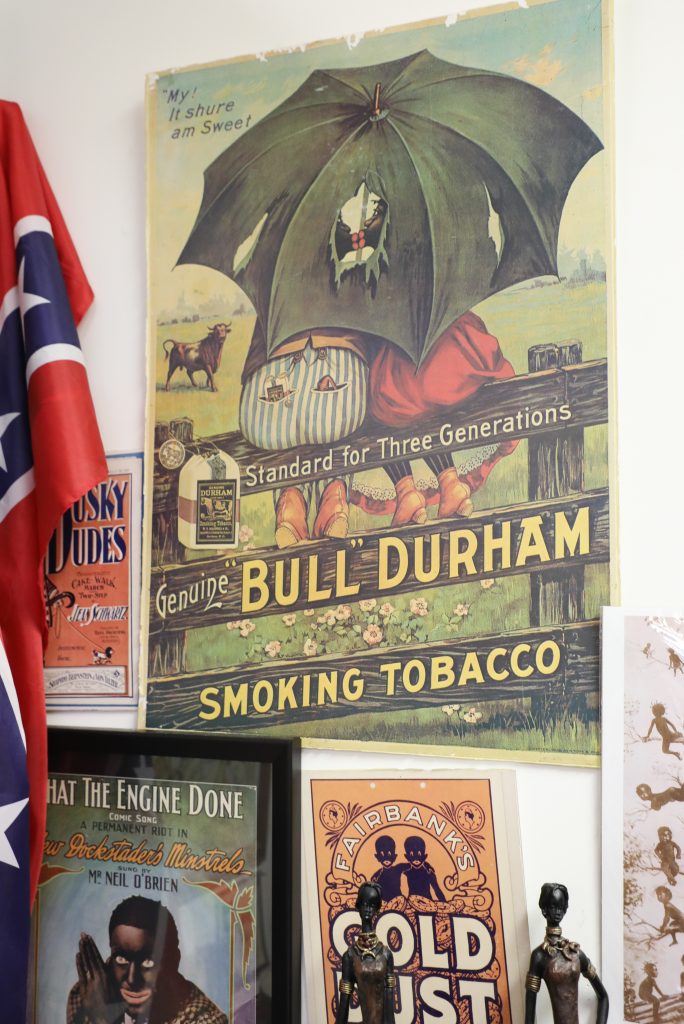
Jim Crow Era Artifacts
Jack Hadley Black History Museum: The Tools that Built the Community
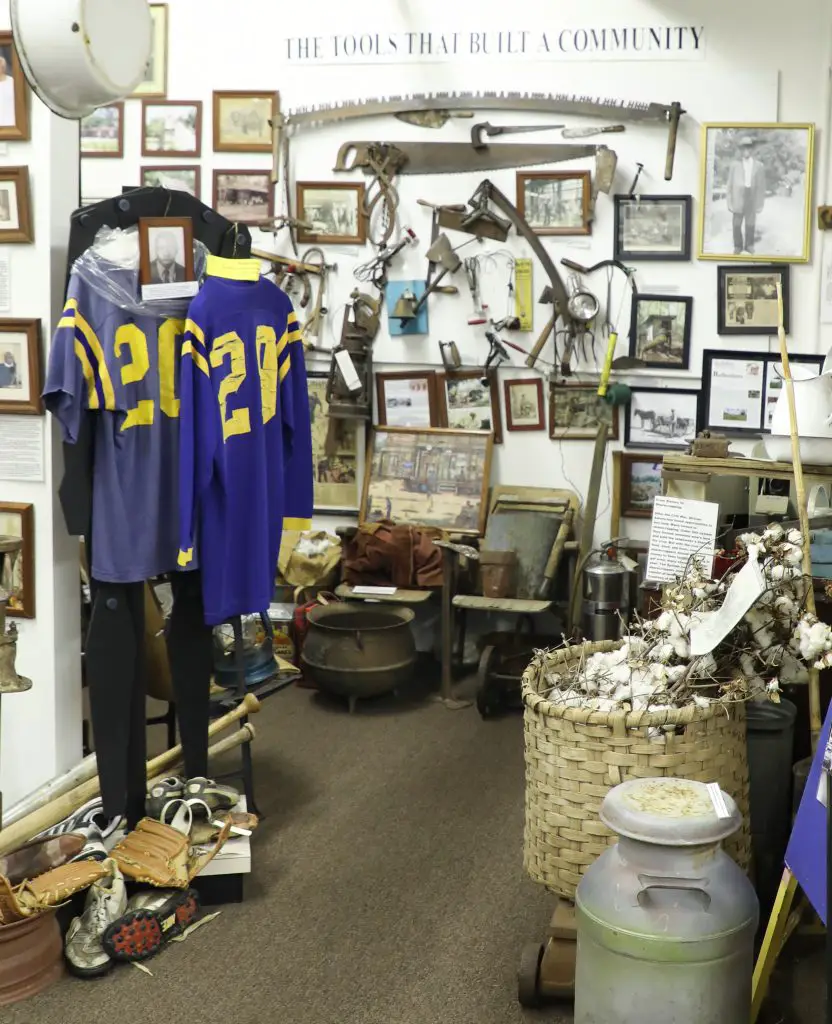
Tools That Built a Community
Thirdly, since Thomasville was a mostly farming community in the past, I thought it was cool to see some of the tools that were used for agriculture.
Jack Hadley Black History Museum: Sports and Memorabilia
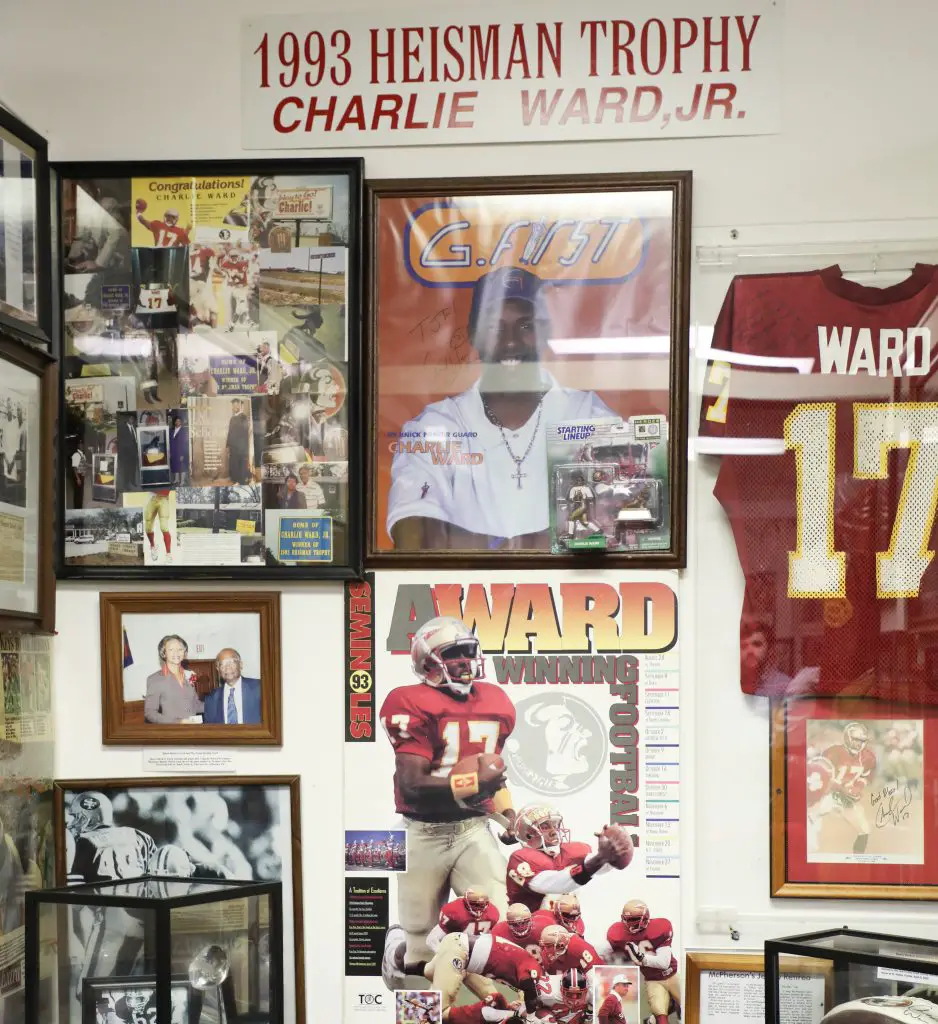
One of the sports galleries
Next, there are sports jerseys and posters dedicated to local athletes that made it big in the National Football League (NFL), National Basketball Association (NBA), and Major League of Baseball (MLB) were on display in this area. Local Heisman Trophy Winner, Charlie Ward, Jr. had a dedicated gallery. Posters and newspaper clipping about baseball legend, Jackie Robinson, were also on display. Jackie Robinson is from the neighboring town of Cairo, Georgia.
Jack Hadley Black History Museum: The Imperial Hotel and the Green Book

Model of the Imperial Hotel, Thomasville’s Green Book Hotel
In the center of the museum was a model of the Historic Imperial Hotel, Thomasville’s only black-owned hotel. This hotel was listed in the 1954 edition of Victor Green’s, “The Negro Motorists Green Book.” As an avid student of African American studies and lover of all things travel, this Green Book establishment piqued my interest. I asked Mr. Hadley about the model, and he explained that the Jack Hadley Black History Museum received gifts from two local organizations to purchase this historic hotel and save it from possible destruction. Mr. Hadley says they’re currently working to raise money to restore the historic hotel.
African Americans Working on Southern Plantations
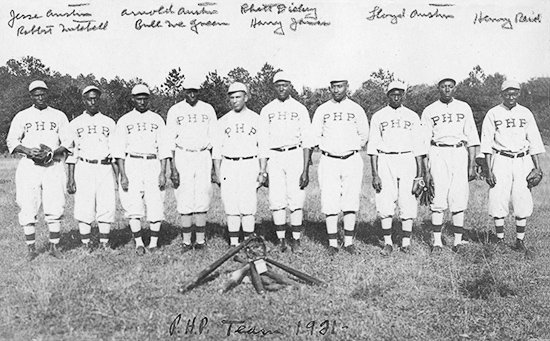
Plantation Baseball Team circa 1921 (Courtesy: PebbleHill.com)
As we were leaving the museum, I noticed an entire exhibit dedicated to the Pebble Hill Plantation. I thought it was interesting that an entire section of this Black History Museum would be dedicated to a local plantation. I asked Mr. Hadley about it, and he explained that he’d grown up on the local hunting plantation (Pebble Hill Plantation) because his father was employed by the plantation.

Plantation Baseball, circa 1924 (Courtesy: PebbleHill.com)
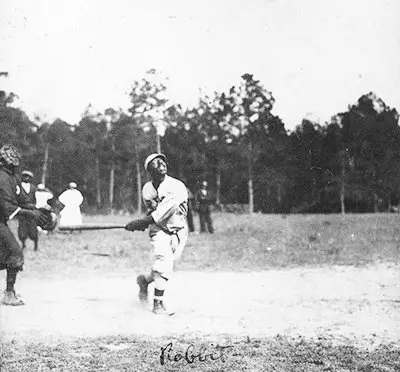
The Pebble Hill Plantation’s owner, Elizabeth “Pansy” Ireland, was a member of a wealthy family of oil tycoons from Ohio. They purchased the property after the Civil War, renovated it after a fire in the 1930s. It was during that rebuild that Pebble Hill was converted into a hunting plantation for wealthy Northerners. Mr. Hadley informed me that Pebble Hill served as a source of employment for many people in the Thomasville community.
Takeaways from the Jack Hadley Black History Museum Tour:

Artifacts from Slavery
Lastly, the Jack Hadley Black History Museum’s artifacts are a compelling Thomasville attraction. Although the museum opened in 2006, Mr. Hadley and his staff work tirelessly to ensure that its galleries remain relevant and up to date. If you’re in Thomasville, the Black History Museum should be at the top of your must-see list.
Planning Your Visit to the Jack Hadley Black History Museum
Location: 214 Alexander Street, Thomasville, GA 31792
Hours: Tuesday-Friday from 10 am to 4 pm; Saturday from 11 am to 4 pm and closed Sunday and Monday.
Admission: Adults ($5), Students ($3)
*Disclaimer: We received free entry to the Jack Hadley Black History Museum to provide a review. All opinions are my own.
If you enjoyed this post on Jack Hadley’s Black History Museum Tour, you might also like:
10 Best US Cities to Learn about Black History
7 Best Sites to Learn about Black History in Washington, DC
Top 10 Best Things to do in Memphis, TN with Kids
Pin for Later:
